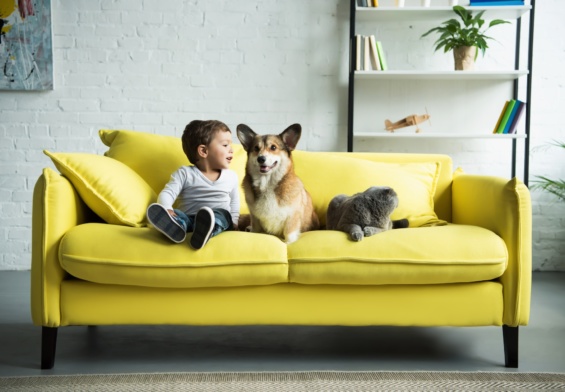The family bathroom gets a lot of traffic. There are potentially serious hazards, but common sense and simple precautions can keep everyone out of danger, including small children and seniors. This is a checklist for seeing how your bathroom measures up.
Bathroom Safety Around the Tub and Shower:
- Line your tub with a non-slip mat or decals. Suction mats and adhesive decals or strips can help prevent slips and falls. It’s especially important for seniors. You can find designs that match your decor or get transparent pieces that are nearly invisible.
- Use a non-skid mat outside your tub and shower stall. Slippery floors can also be a hazard when you’re stepping out of the shower or tub. Keep your floor dry and use a mat for extra protection.
- Set your water heater no higher than 120 degrees Fahrenheit. By regulating your water temperature, you can help prevent scalding. If you can hold your hand comfortably under running hot water, it’s a good sign the temperature is safe.
- Supervise children at all times. Keep close enough to touch when you’re bathing a child four years old or younger. Bath seats are nice aids, but it’s no substitute for a watchful adult. Small children should be supervised around all water, including the sink and toilet.
- Install grab bars. Safety bars may be particularly helpful for seniors. Place them where they can help in getting in and out of the tub.
Keeping the Medicine Cabinet Safe:
- Lock your medicine cabinet if necessary. Families with small children may need to lock the medicine cabinet. You can buy a model that needs a key or add childproof locks to your current cabinet. Many brands are easy to install using just adhesive strips.
- Store medications safely. Keep medications in bottles with childproof caps. Ensure that over the counter medicines are also stored securely. Remember, many medicines are affected by temperature and humidity so keep everything safe and out of reach of children.
- Throw out old medications. Medications lose their potency over time. Throw out anything past its expiration date. Look for signs of deterioration, such as moisture inside a bottle or liquids that look separated.
Other Safety Tips for the Bathroom:
- Be sure electric outlets meet current safety standards. Having a Ground Fault Circuit Interrupter (GFCI) on outlets near water can help protect you from shock. If you don’t already have them, consult an electrician.
- Use electrical devices safely and store them away when not in use. Keep hairdryers and other electrical devices away from the tub and shower. Avoid leaving hot curling irons lying around.
- Use candles carefully. It’s fun to pamper yourself with candles at bath time. Just keep them away from flammable fabrics and extinguish them when you leave the room.
- Avoid sharing towels or toothbrushes. Give each family member their own toothbrush and towel to avoid transferring germs. You can use different colors or labels to keep them straight.
- Clean surfaces with disinfectants and bleach regularly. Use disinfectant daily on the surfaces you touch frequently, such as faucets and toilet handles. Scrub the shower and tub with bleach to fight bacteria.
- Wash your hands frequently. One good thing about all those flu warnings is that they raise awareness about the importance of handwashing. Wash your hands after using the toilet and after cleaning the bathroom.
Your family spends a lot of time in the bathroom, so keep it clean and safe. With a little thought, you can get rid of any dangers and create a pleasant spot that serves your daily needs.


